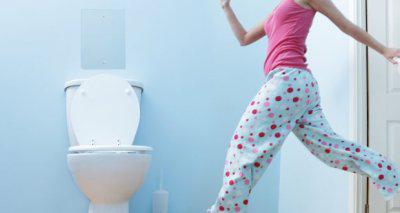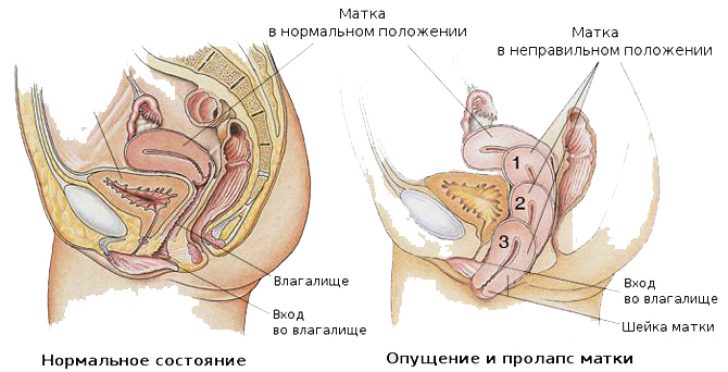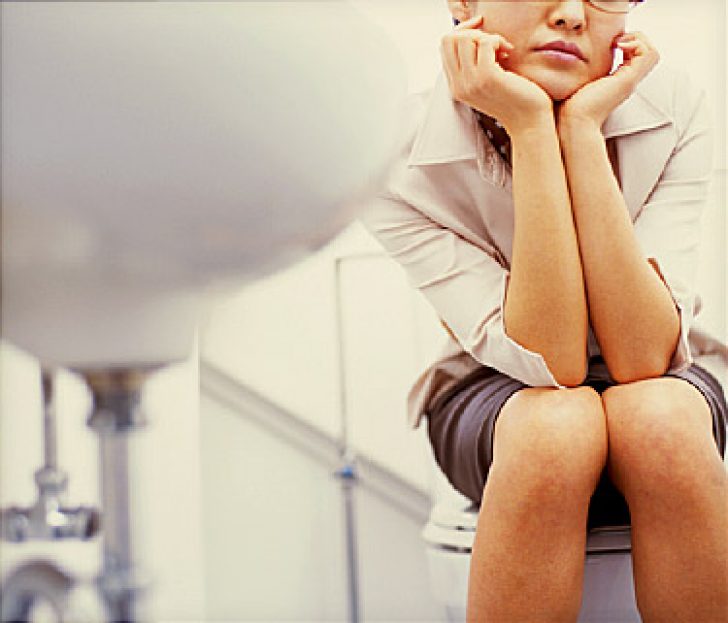Frequent urination in women - causes and treatment
Disputes about how much urination per day can be considered normal have been going on for a very long time. At the moment, the value of 6-10 urination per day has been determined - this will be considered the norm for a healthy woman, if the process of urination itself is not accompanied by pain, discomfort or the need for effort. Doctors say that if the number of urination per day exceeds the number by 10 times, then this should be the reason for a visit to a medical institution - such a syndrome may indicate the development of certain pathologies.
Table of contents:Physiological increase in urination
Frequent urination does not always indicate the development of any pathological processes in the body - often this is preceded by physiological factors. There are several types of frequent urination in women that do not require medical intervention:
- Drinking plenty of fluids, taking diuretic drugs, eating food or okroshka. A woman will be forced to visit the toilet frequently, but as soon as the use of the above-mentioned products stops, the processes of urination and urination are normalized.
- Hormonal changes in the body. Frequent urination in women can be observed during the period - for the elderly, it is generally considered normal to go to the toilet at night (no more than 1-2 times). The same syndrome is also inherent in pregnant women - firstly, all the same hormones “work”, and secondly, in the last months of pregnancy, an enlarged uterus begins to put pressure on nearby organs, in particular, on the bladder.
If the syndrome in question arose against the background of these factors, then no treatment is required, the work of the urinary system usually quickly normalizes. But there are a number of diseases for which frequent urination is a symptom - therefore, doctors recommend seeking medical help in a timely manner.
Usually, pathologically frequent urination, which has arisen as a symptom of a developing pathology, is also accompanied by other syndromes / signs of diseases - this helps the doctor to differentiate frequent urination and prescribe competent laboratory and instrumental studies to the patient.
Cystitis
We recommend reading:This is an inflammatory process that occurs in the bladder, which is characterized by the following symptoms:
- during urination, burning and pain in the urethra appear;
- there is a constant feeling of incomplete emptying of the bladder;
- increase in body temperature to subfebrile indicators;
- there is a non-intensive pain syndrome in the lower abdomen (in the area of \u200b\u200bthe anatomical location of the inflamed organ).
 Note:if, with the above symptoms, a woman notes clouding of the urine and the appearance of a small amount of blood in it (a few “fibers” are enough), then this will indicate the development of complications of cystitis. It is necessary to immediately contact the specialists for examination and the appointment of effective treatment.
Note:if, with the above symptoms, a woman notes clouding of the urine and the appearance of a small amount of blood in it (a few “fibers” are enough), then this will indicate the development of complications of cystitis. It is necessary to immediately contact the specialists for examination and the appointment of effective treatment.
If the inflammatory process of the bladder is started to be treated on time, then there will be no consequences and complications. Usually, a woman undergoes antibiotic therapy, she is prescribed antispasmodics to relieve pain, drugs with anti-inflammatory and antiviral effects. Physiotherapy will also be effective in the treatment of cystitis, separately, doctors pay attention to the need to provide the patient with a plentiful drink - fruit drinks, rosehip broth will be the best choice.
 In addition to complaints of frequent urination, women with the development of an inflammatory process in the urethra (urethritis) note itching and mild pain directly during urination, moreover, these symptoms are most pronounced at the very beginning of urination, literally at the first drops. It is not uncommon for mucus to come out of a woman's urethra.
In addition to complaints of frequent urination, women with the development of an inflammatory process in the urethra (urethritis) note itching and mild pain directly during urination, moreover, these symptoms are most pronounced at the very beginning of urination, literally at the first drops. It is not uncommon for mucus to come out of a woman's urethra.
Note:the inflammatory process in question can proceed almost asymptomatically - the described signs are so mildly expressed that women often do not seek medical help. And it’s completely in vain - the treatment of urethritis is necessary, moreover, exclusively folk methods will not help with this.
When diagnosing urethritis in a woman, doctors perform therapy in two stages:
- The course of admission - it usually does not exceed 5 days.
- Restoration of the microflora of the vagina to normal limits.
Absolutely every patient diagnosed with urethritis will need to strengthen their own immunity.
Pyelonephritis
We recommend reading:Doctors divide the inflammatory process in the tissues of the kidneys into acute and chronic pyelonephritis. Frequent urination in women is almost always associated with chronic pyelonephritis, to this symptom are added recurrent pain in the lumbar region of a dull, aching nature. If the disease in question affects two kidneys at once, then arterial hypertension is often diagnosed - persistently high blood pressure.
If chronic pyelonephritis enters the stage of exacerbation, then the woman will show symptoms inherent in the acute course of the disease:

Treatment of chronic pyelonephritis will be long and should be prescribed only by a specialist. Typically, therapy is as follows:
- a course of taking antibacterial drugs (antibiotics);
- the use of antispasmodics and other painkillers;
- taking specific renal fees.
Doctors strongly recommend women with diagnosed chronic pyelonephritis to undergo spa treatment.
Urolithiasis disease
We recommend reading:With urolithiasis, stones can be located in any part of the urinary system, but frequent urination will be present only in that case. If the stone is localized in the bladder. A woman in this case will complain of the following symptoms:
- a sudden urge to urinate during any physical activity - from intensive walking to exercising on simulators;
- the stream of urine during urination may stop abruptly, but the feeling of fullness of the bladder does not go anywhere;
- pain in the lower abdomen with a characteristic localization in the suprapubic region.
Treatment of urolithiasis begins with a full examination of the patient to determine the size and type of stone. The doctor may then prescribe medication and diet. In most cases, urolithiasis involves surgery to remove stones.
Gynecological diseases
Many are sure that frequent urination is a sign of the development of a pathology of the urinary / urinary system. In fact, there are a number of gynecological diseases for which the condition in question is a characteristic symptom.
We are talking about this disease only if, for various reasons, there has been a shift in the anatomical location of the uterus. This can happen due to the weakening of the muscles and ligaments of the pelvic floor, which hold the uterus in a normal position. Frequent urination in a woman appears at the time of a strong displacement of the uterus, when it begins to put pressure on nearby organs. As a rule, before the appearance of this symptom, a woman also notes other symptoms of uterine prolapse - for example, pulling pains in the lower abdomen, bloody discharge from the vagina, menstrual irregularities.

Treatment of uterine prolapse should be carried out only under the supervision of a medical professional - the doctor will be able to assess the patient's condition and choose tactics on an individual basis. It depends on how much the prolapse of the uterus has occurred, whether there are concomitant gynecological diseases or pathological processes in the organs of the abdominal cavity and small pelvis. As a rule, doctors prescribe therapeutic treatment - it will be complex and lengthy. As part of this type of treatment, hormonal therapy is performed, therapeutic exercises are prescribed, and a woman's immunity is strengthened. In some cases, surgery is indicated - for example, when the prolapse of the uterus is started, no treatment has been previously performed or the therapy has not given positive dynamics, the uterus prolapses.
This is a benign tumor that is localized in the muscle tissues of the uterus. For a long time, the disease is asymptomatic, so frequent urination in women is noted if the uterine fibroids have already become quite large. Of course, before the appearance of the syndrome in question, a woman will be disturbed by menstrual irregularities, and recurrent pains in the lower abdomen, and a lack of sexual desire, but ladies rarely seek medical help at this stage.
Treatment of uterine fibroids can be carried out in two ways - therapeutic and surgical. In the first case, the patient will be prescribed drugs from the group of hormones that will help stop the growth of a benign tumor. Surgical intervention involves the removal of either fibroids or the entire hollow organ - the decision is made by the doctor.
Endocrine diseases
In this case, we are talking about diabetes - frequent urination in women is usually one of the main symptoms of the pathological conditions in question.
It develops as a result of disorders of carbohydrate metabolism in the body. Frequent urination at night is the first sign of diabetes. It is noted that during the same period, the patient begins to be disturbed by intense thirst, constant dryness in the mouth - this forces her to consume a large amount of liquid, which certainly leads to an increase in the amount of urine excreted. In addition, women note the following symptoms:
- itching of the vulva;
- development of vulvovaginitis for no apparent reason;
- a decrease in the regenerative abilities of the body - for example, even small wounds on the skin heal for a very long time;
- decreased performance, general weakness.
 Treatment of diabetes mellitus is prescribed by an endocrinologist and a therapist. It consists in following a diet, getting rid of extra pounds of weight. At the same time, the patient is constantly monitored - if within 3-6 months the blood glucose level remains very high, the woman's condition does not improve, then doctors may recommend taking sugar-lowering drugs - insulin.
Treatment of diabetes mellitus is prescribed by an endocrinologist and a therapist. It consists in following a diet, getting rid of extra pounds of weight. At the same time, the patient is constantly monitored - if within 3-6 months the blood glucose level remains very high, the woman's condition does not improve, then doctors may recommend taking sugar-lowering drugs - insulin.
diabetes insipidus
This disease is rare. Diabetes insipidus is characterized by a decrease in the level of the hormone vasopressin. The main, and often the only, symptom of the disease in question is frequent urination at night and the release of too much urine. All this happens against the backdrop of excruciating thirst.




